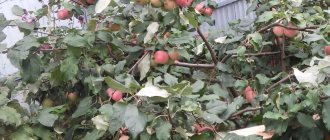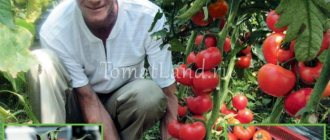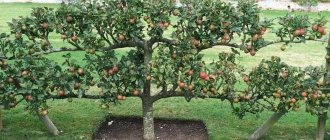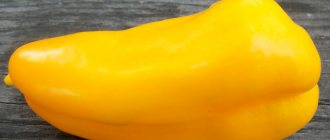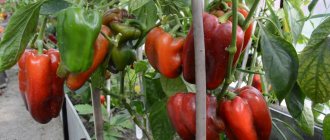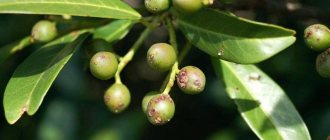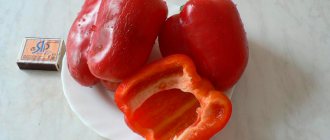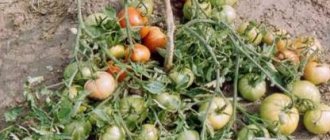Due to the taste and beneficial qualities of the fruit, the apple tree is the most common fruit crop in gardening.
Every year, breeders from different countries try to develop new varieties of this crop or improve the quality of folk selection.
Quite recently, a foreign variety of the Quinti apple tree was developed, which, due to its characteristics, was appreciated not only in its homeland, but also in Russia.
In order to grow this apple tree on your property, you need to know all the techniques for planting and further care.
Description
Quinti is an early ripening apple tree variety .
Breeders developed the fruit crop in Canada by crossing the Red Melba and Crimson Beauty varieties.
In 1986, the variety passed all testing in Russia and was included in the State Register.
Then the fruit crop was zoned into different regions and regions of Russia, such as:
- Rostovskaya,
- Vologda,
- Lipetskaya,
- Astrakhanskaya,
- Kurskaya.
The variety has also proven itself well in the following areas:
- Volga region,
- North Ossetia,
- Krasnodar region.
Region of natural growth
The region of natural growth is the following regions of present-day Russia: Lipetsk, Voronezh, Kursk, Rostov, Volgograd, Astrakhan.
As well as the Krasnodar Territory, North Ossetia and Kabardino-Balkaria.
The following apple tree varieties are also suitable for planting in these regions: Idared, Golden Delicious, Lobo, Yablochny Spas, Bellefleur Kitayka, Yandykovskoye, Fuji, Solnyshko, Prima, Renet Simirenko, Yuzhny, Korey.
additional characteristics
To get to know the variety in more detail, you need to know all its characteristics.
Advantages and disadvantages
The Quinti apple tree belongs to the early group in terms of fruit ripening .
The main advantages of the variety include :
- Precociousness;
- Heat and drought resistance;
- High transportability.
But, despite these indicators, the apple tree also has negative qualities .
The disadvantages of the variety are:
- Low winter hardiness,
- Weak immunity to scab.
Apple harvest.
Dimensions of an adult tree
The Quinti apple tree is medium-sized , the height of the tree reaches 4 - 5 meters. The crown is broadly rounded with drooping lower branches.
Annual growth
Skeletal horizontal branches grow by 5–6 cm per year.
Frequency of fruiting
Regular fruiting is considered another positive feature of the apple tree , even in the most unfavorable years.
Productivity
The variety is high-yielding. From 100 to 120 kg of fruits are harvested from one mature tree.
Truly a children's favorite apple.
Tasting assessment
The fruits weighing 160 - 180 g have a smooth, greenish-yellow skin with red streaks over the entire surface.
The pulp is aromatic, sourish-sweet taste, according to the tasting score - 4.6 points .
You should know! Apples are very rich in fruit sugars and ascorbic acid.
Winter hardiness
The frost resistance of the variety is quite low .
Without proper care, a tree is subject to:
- Spring and autumn frosts;
- It also freezes in winter at low temperatures of 20 degrees.
Disease resistance
The apple tree has weak immunity to fungal diseases. With prolonged moisture, branches and leaves become damaged by scab.
How to care for the Quinti variety
In order for a culture to develop normally, it must be adequately cared for. At the same time, it is worth watering and feeding the plant on time.
Watering and fertilizing
When growing a tree in a region with a warm climate, it needs to be watered on time. For the first time, the soil must be moistened after planting. Subsequently, the number of irrigations is adjusted taking into account climatic conditions. It is recommended to pay special attention to this in the summer. For every meter of wood, 10 liters of liquid are used.
The soil for the seedling requires nitrogen fertilizing. After 2 years, it is recommended to use other means. The culture is considered heat-loving, so it is better not to use organic products. A large number of pests develop in such fertilizers. For Quinty it is better to use synthetic substances.
Trim and shape the crown
It is recommended to begin crown formation the next year after planting. The pruning procedure is performed in the spring. In this case, branches that have grown more than 60 centimeters should be pruned. Scissors are used for this. Pruning is carried out in such a way that the crown acquires a rounded shape.
Loosening and mulching the tree trunk circle
The soil around the tree must be systematically loosened. Thanks to this, it is possible to get rid of weeds and supply the roots with useful elements. Be sure to mulch the soil. To do this, use straw, mown grass, and fallen leaves.
Prevention and protection of wood
Insecticides are used to control harmful insects or prevent their occurrence. Such products should be used before buds open and flowering begins.
If the tree has suffered from diseases or pests, it is recommended to cut off the affected fragments and burn them. After this, the damaged areas are treated with garden varnish, and the tree itself is sprayed with Bordeaux mixture or fungicide solutions. To prevent re-development of the disease, the procedure is performed at intervals of 7-10 days.
Covering a fruit tree for winter
The plant has low frost resistance. Therefore, it must be properly prepared for winter. To do this, the trunk should be insulated with special materials, and the trunk circle should be covered with a mulch layer.
Reviews
Marina. Novosibirsk region. “The Quinti apple tree has been growing in our dacha for many years; it fully corresponds to what I saw in the photo and description of the variety. I can only leave positive feedback . Fruiting and productivity are at the highest level. We begin picking tasty, aromatic fruits from the tree in July. The apple tree is unpretentious in care and adapts well to droughts.
It tolerates winters well; the lower branches rarely freeze. Resistance to scab is weak, but the tree quickly recovers after treatment.”
Hope. Lipetsk region. “ I was very pleased with the Quinti variety, having planted it on my plot. I bought it after seeing the description and photo. After planting, the seedling took root well and began to develop quickly. Just 2 years later we harvested our first harvest.
We begin to eat apples fresh, tasty, aromatic, and juicy already in the middle of summer.
We also use them to make various preserves and preparations.”
Sergey. Altai region. “I consider Quinti to be one of the best varieties that grow on my site. Fruit crops do not take much time to care for. It is rarely damaged by fungal diseases; there is no fruit rot. Fruiting is stable every year.
Productivity is high . Marketable apples with good taste.”
Landing
If you want to have a beautiful apple tree in your garden, you need to plant it correctly, and for this you need to choose the right place, soil, fertilizers, and then the variety requires proper care.
Deadlines
The description indicates that the most favorable period for planting Quinti is autumn. It is at this time of year, before frost, that the tree will take root well, and during cold weather the root system will get stronger, and by spring the apple tree will begin to grow and produce its first flowering.
Preparing the site
Choosing a place for a variety is easy. It is heat-loving, so try to choose a sunny area that will be exposed to the winds to a minimum. A week before planting, holes are prepared for the seedlings, which should be at least 5 m apart from each other.
The holes are dug 1.5 m deep and 2 m in diameter. Fertilizers are poured into it: sand, humus, compost, so that the tree takes root better.
Preparation of seedlings
Choose seedlings with strong roots
You need to buy seedlings from trusted places. It is better if they are young enough, then the tree will take root faster. The seedling must have a well-developed root system, which will be adapted to the climatic conditions in which it will develop.
If there are dry branches or leaves on the seedlings, they need to be picked before planting, and the young tree itself should be placed in water for 4-5 hours before being put into the ground.
Technology
Having previously straightened the root system, plant a young tree and sprinkle it with earth. Then the soil is trampled down a little and watered abundantly. The fertilizer that was poured when preparing the hole will be enough for the next 2 years.
Features of planting and caring for an apple tree
To achieve high yields, you need to know all the planting techniques and features of growing the variety.
Landing
The right technology will ensure ease of planting.
Deadlines
Gardeners recommend planting Quinti seedlings in the autumn a month before the first frost.
In this case, the root system has time to get stronger and in the spring it will begin to develop quickly with good strength.
Technology
The planting hole is prepared 1 week before planting the seedling. To do this, dig a hole 2 meters in diameter and 1.5 meters deep.
Then compost, sand and humus are added, which will promote good rooting of the tree.
After the specified time has passed, a seedling is placed in the hole, the roots are straightened in different directions and covered with earth.
After the work is completed, a hole is formed near the tree trunk and watered well.
Important! When planting, the root collar should not be deepened; it should be 6 cm above the soil level.
Distance
In order for all branches of the apple tree to receive sufficient light throughout its life, the seedling planting scheme should be taken into account .
The apple tree is planted at a distance of 4 meters in a row and 5 meters between rows.
Agricultural technology
The fertilizers applied when planting the apple tree are enough for the next 2 years.
In the future, mineral fertilizers are applied annually in liquid form under the root system.
Growing on sandy soils
The apple tree develops well and bears fruit on humus soil , but when planted on sandy soils, difficulties may arise with nutrition and development of the root system.
In order to grow an apple tree in such conditions, you need to know several growing , which are as follows:
- When planting a seedling, humus and mineral fertilizers are added to the hole;
- The tree trunk circle is sown with grass, the tops of which are subsequently mowed down;
- Every autumn, fertilize the apple tree with 1 tablespoon of urea.
Regular application of organic fertilizers will restore the deficiency of soil organic matter .
Pruning and crown formation
The apple tree begins to form a crown the next year after planting, cutting off the ends of all branches. Subsequently, damaged, diseased and dry branches are removed.
Pollinator varieties
This variety is self-sterile . To set fruit, it requires pollination by other varieties of apple trees with the same flowering period.
Features of growing Quinty
Landing
Basic conditions
- Apple trees should be planted exclusively in sunny, open areas. However, you need to make sure that there are no drafts there. In a blowing wind, seedlings will most likely die at a young age, and in the shade they grow weak and sometimes refuse to bloom.
- The variety is resistant to drought precisely because its roots penetrate deep into the soil, reaching water. If the groundwater is too high, the shoots may rot and the trees will die. For the same reason, Quinti is not planted directly near rivers, lakes, ponds and even shallow wells.
- It is not necessary to prepare holes 6-8 months in advance for the variety, but it certainly won’t hurt. They dig holes 60-80 centimeters deep and up to 1 meter in diameter, put fertilizer on the bottom, then drain it and spill 35-45 liters of water. Leave the prepared holes without covering them with anything.
- It is advisable to choose airy and fertile soil for planting, so that it allows water and air to pass through well, but at the same time absorbs moisture. Sandy loam or loam must be fertilized, but chernozem is better diluted, for example, with washed river sand, so that it is less heavy.
- A distance of up to 4-5 meters is left between the trees, and even a little more can be done between the rows for ease of care and harvesting. And the trees themselves in adulthood will not conflict with crowns or rhizomes if they are free.
- Supports, for example, wooden, metal or plastic strips, are hammered or dug into the holes, to which the apple trees are tied after planting. If you place them on the north side, they will not only serve as support, but also protect from the cold.
- The root collar of apple trees, if it is necessary to preserve the qualities and properties of the rootstock, must always be left above the horizon of the earth's surface. Otherwise, it may grow roots higher, and then all properties will be lost.
- Place the seedling vertically on a pile of soil or drainage, straighten the roots, sprinkle it with soil, and tamp it down with your hands. An earthen bank up to 10-15 centimeters high is formed along the perimeter of the hole, 40-55 liters of water are poured inside it, it is advisable to mulch the surface.
Disembarkation dates
In southern regions, where the weather is generally warm or moderate, Quinti can be planted in spring and autumn. The trees take root approximately the same way, there is not much difference. However, where spring comes later, and winter for the variety is harsh and cold, it is still better to choose planting in early spring, so that over the summer the tree has time to take root well and adapt to its new environment.
Tree care
Protection from frost and pests
In the Crimea, the North Caucasus and similar warm areas, trees can be wrapped using the standard method, simply wrapping the trunks with burlap, old tights, roofing felt or roofing felt. However, in colder climates you will have to put in more effort and spend more time. You can cover the area at the roots of spruce branches, sheaves of straw or mats of dry grass; in extreme cases, heat up a layer of soil of 15-20 centimeters, which will have to be removed in the spring.
To protect Quinti from damage by insects, you need to whiten the trunks to a height of more than 1 measure twice annually - in spring and autumn. If there is a danger of a certain type of damage, you can use suitable insecticides from a gardening store. Regular cleaning of the root zone from fallen leaves, and even more so fruits, elimination of unwanted excessive humidity, and ensuring good ventilation of the crown helps prevent diseases. It wouldn’t hurt to regularly treat trees with industrially produced fungicides.
Loosening the soil, watering: proper agricultural technology
It is good to water young trees once every 10-14 days. For adult boles, this amount can be reduced to 6-7 times over the entire season, and even then during particularly dry and hot periods. Fertilizers for Quinti should be applied carefully. For example, a fertilized pit during planting will last for at least 2-3 years. In the future, it is worth looking at the need and feeding the trees along with watering. Experienced gardeners advise annually adding a tablespoon of ammonium nitrate diluted in 20-30 liters of water in the spring.
Pruning: simple crown formation
The foliage of the tree is high, so it seems highly dense, but in fact this is not entirely true. The formation of the crown begins a year after planting in open soil. At the same time, the central conductor is removed by a third, and the branches are made even shorter, five to seven centimeters. They need to be placed in tiers, far from each other; it is advisable to leave 2-4 of the largest ones.
In the future, all that remains is to maintain such a sparsely tiered form, cutting off everything unnecessary. For example, you should remove branches growing inside the crown or those that stick up. Dry, diseased or damaged shoots are also removed in spring and autumn. Rejuvenation can begin from 12-15 years from the start of fruiting of the tree.
Pollinator varieties
- Champion.
- Gala.
- Currency.
- Melba.
- White filling.
- Everest.
Reproduction
- Vaccination.
- Rooting.
- Growing from seeds.
Diseases and pests
- Powdery mildew.
- Scab.
- Green aphid.
- Fruit rot.
- Bacterial burn.
- Shield.
- Codling moth.
- Leaf roller.
- Hawthorn.
Features of ripening and fruiting
Fruiting
Abundant apple tree blossoms.
Start
The apple tree begins to bear fruit early . The first harvest is harvested 2 years after planting.
Peculiarities
The apple tree is characterized by regular fruiting without a decline in yield. Under favorable conditions, 2 harvests can be harvested from a tree in one season .
Deadlines
Blooms
The first inflorescences on the tree bloom in the first ten days of May.
Maturation
The climatic conditions of the regions affect the harvest ripeness of apples. On average, the fruits ripen in mid-July.
Fruit storage
Apple harvest.
The keeping quality of the fruit is low . 10 days after picking, the apples begin to deform and lose their taste.
Disease and pest control measures
Insecticides are used against insects; spraying with them for preventive purposes is carried out before the buds open and the flowering phase begins. They will help from:
- flower beetle;
- codling moths;
- Californian scale insect;
- sawfly;
- red fruit mite;
- green apple aphid;
- five types of leaf rollers;
- American white butterfly;
- apple moth.
If damage to the tree by insects or diseases does occur, then the damaged areas of the tree must be cut and burned, the cut areas should be treated with garden varnish, and the tree should be treated with a strong solution of Bordeaux mixture and fungicides. To prevent relapse, spraying with prophylactic doses of the compositions is carried out at intervals of 7-10 days.
Recharge
When enriching soils, it is necessary to use manure and guano with extreme caution; organic matter is a favorable environment for the wintering of insect pests and the proliferation of pathogenic microflora, which causes bacterial damage to bark, wood, and fruits.
Pollinator varieties
There are no special recommendations for pollinating varieties; the main thing is that the variety planted in the neighborhood is self-fertile, and its flowering dates coincide as closely as possible with Quinti.
Subspecies and options
EarlyQueen
EarlyQueen is a subspecies of the Quinti variety. This fruit crop was developed in Holland .
A winter ripening variety. Harvesting maturity occurs in mid-October:
- The fruits are large in size , weighing 190 – 250 g. conical-round shape.
- The skin is yellow-green in color, with a blurred blush over the entire surface.
- The pulp is dense , juicy, sweet and sour taste.
- Apples have excellent product and taste qualities.
The Gala Shniga apple variety is the best for pollination.
The variety is self-sterile; the best pollinating varieties are:
- Everest,
- Gala,
- Champion.
Frost resistance is high.
Attention! Weak immunity to scab and powdery mildew.
Harvest and storage
The harvest is ripening smoothly; after reaching ripeness, the apples do not hold tightly to the branches; there is no point in delaying the harvest. Technical and consumer ripeness coincide in terms of timing, occurring in the second half of July.
It is advisable to remove apples by hand. They have very delicate pulp; with mechanical shocks, the fruits quickly deteriorate. They are placed in wooden boxes, layered with paper or non-woven fabric. Store in a dark, cool room with good ventilation and humidity within 50%.
Growing in regions
In outskirts of Moscow
In order to grow a Quinti apple tree in the Moscow region, you need to take into account that the variety does not tolerate frosts and severe frosts quite well .
To avoid freezing of the tree in winter, in the fall the tree trunk circle is mulched with a 10 cm layer of humus, and the crown itself is covered with burlap.
For good yield, the apple tree is fed with complexes of mineral fertilizers in liquid form.
To avoid sunburn, the tree trunk is whitened with lime 2 times a year: in early spring and autumn.
In Krasnodar region
According to numerous observations, for good yield of the Quinti variety in the Krasnodar Territory, the tree needs :
- A nutritious diet
- pruning,
- Pest protection.
Also, to form ovaries, gardeners recommend applying nitrogen, potassium and phosphorus fertilizers under the tree trunk .
Important! Fertilizing is carried out in the spring in two stages: before flowering and after it.
Fruit collection
Apples must be picked directly from the branches; fallen apples will not last even three days.
Storage tips
The optimal temperature for storing Quinti apples is from 0 to +10 °C. Each fruit must be isolated from its neighbors, but at the same time the air flow must be open to it; this condition can be achieved by wrapping it in newspaper, food tracing paper, or tissue paper.
It is better to store wrapped apples not in wooden, but in plastic boxes; they contain neither rot pathogens nor other pathogenic microflora. Using apples in cooking and farming
Sweet apples are an excellent raw material for making jams, preserves, and compotes with minimal added sugar. Dried apples are an excellent raw material for making compotes. Considering that they can only be stored in canvas bags, they will also add a summer aroma to the room. Regional cultivation
The timing of flowering, fruiting and the quality of the crop - the balance of sugars and acids - depend on the climatic characteristics of the region.
Moscow region
For the Moscow region, the typical time for planting Quinti apple trees is in mid-October - a month before the onset of the first frost. Taking into account the soil moisture and the possibility of close occurrence of aquifers, the drainage layer in the planting hole should occupy at least 60 cm.
Villages
Kaaimanston
Bitagron
Heidoti
Pakka Pakka
Makajapingo
Quinty settlements
- Bitagron[27]
- Heidoti[28]
- Kaaimanston[17]
The Quinti are a minority in the following villages:[29]
- Pakka-Pakka
- Makajapingo
Landing technology
A pit with a drainage, nutrient and regular layer of soil is prepared in the fall, regardless of the expected planting time. A seedling is placed on an improvised mound, where the top layer of soil is ordinary, not enriched, and its roots are evenly distributed throughout the hole. A seedling of a low-growing tree will need support; before lowering it onto a prepared earthen bed, a stake must be driven into the middle of the hole. A seedling will be tied to it.
Agricultural technology
The complex of tree care - agricultural technology, consists of the methodical implementation of all stages of activities aimed at obtaining a healthy tree and a large harvest.
Caring for the apple tree
Caring for an apple tree begins even before it is planted. To strengthen the root system and provoke rapid plant growth in the first season, the root system is immersed in a solution of a growth stimulator for 24 hours.
Trim and shape the crown
Shoots that have lengthened by more than 60 cm over the summer period must be shortened. Considering that the crown of the Quinti variety is round in shape, it must be adhered to when pruning skeletal branches; the lower ones should be slightly longer than each subsequent tier.
What to do during flowering
To strengthen the flowers on the branches and increase their strength for the formation of ovaries, it is necessary to saturate the soil with nitrogen. Leafworms, mites and other insects will want to feast on fresh foliage, which means that at the stage of bud formation it is necessary to spray against pests.
Watering trees
The need for additional irrigation depends entirely on the climatic and geographical characteristics of the area. Apple trees growing in sunny, arid regions need to be watered once a week at the rate of 10 liters of water per meter of tree height. In areas with periodic rains, watering is carried out during prolonged dehydration of the soil.
